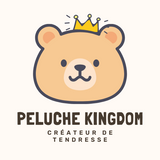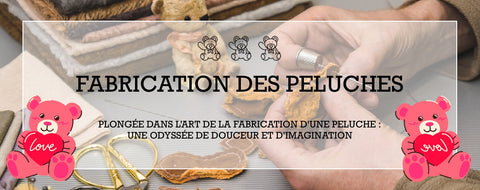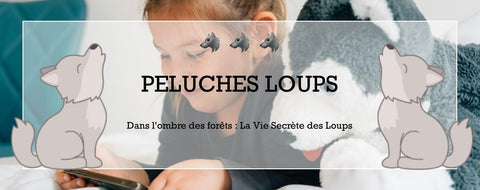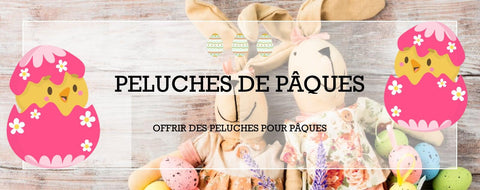
White Noise: The Pros and Cons of Using White Noise to Help Your Baby Sleep
of reading - words
For a parent with a newborn at home, sleep can seem like just a dream 🌈 . Even if you're past the phase of waking up every few hours for feedings, putting your baby to bed can still be difficult.
To help your baby sleep better at night , pediatricians often recommend relaxing activities, such as warm baths. When nothing seems to work, parents can turn to alternative measures like white noise and night lights .
Babies tend to like white noise. They are used to it. Before making his big debut, your baby spent his days and nights in the reassuring buzz of human life . Your beating heart, the sound of blood rushing around your body, and the rhythm of each breath created a comforting cacophony, much like the rumbling of a void.
For comparison, maternal "falling" sounds in utero range between 70 and 91 decibels 📣 , while a vacuum cleaner is typically 70 to 80 decibels. In other words, the uterus is not a quiet place!
Once born, your little one suddenly finds himself in a disconcerting world of hushed tones and measured steps. Although designed for their comfort, this carefully guarded silence can leave them feeling detached, anxious, and isolated . No wonder your sweet baby has trouble sleeping.
White noise can help your baby sleep through the night , but it can have long-term consequences. This is why it is important to weigh the pros and cons before using white noise as a measure of falling asleep for your baby.

1) What is White Noise?
The sound of the sea 🌊 or calming acoustic music are usually the sounds adults use to relax, but when it comes to babies, it's actually white noise sounds that are most effective at creating a calming environment, as they resemble the sounds they heard in the womb.
White light ☀ is made by mixing all the different colors of light. (The rainbow is obtained by recomposing white light into all the individual hues). Similarly, white noise is a mixture of all different pitches and a sound that covers a wide range of frequencies. It has a fuzzy quality, with no specific pitch.

White noise therefore refers to sounds that mask other sounds that might occur naturally in an environment 🚒. If you live in a city, for example, white noise can help block out traffic noises .
White noise is similar to the "static" sounds of television 📺 or radio, but constant background noises such as those from a washing machine, vacuum cleaner, fan or running water contribute also find sleep in the same way.

There are even machines specially designed for young children 🍼. Some are equipped with instrumental lullabies or even a heartbeat sound that serves to imitate that of the mother.
A groundbreaking 1990 study published 📑 in the Archives of Disease in Childhood showed that white noise could be helpful. Forty newborns were studied, and it was found that 80% of them were able to fall asleep after hearing white noise for five minutes.

Here are some examples of white noise:
- White noise for baby fan
- The sound of a fan
- The sound of water 🏞 flowing
- A radio station that is only static
- The chatter of several voices at the same time
- The sound of a busy street
- Discover 7 other white noises
Adults notice white noise when they enter a new environment. Very quickly, the brain 🧠 decides not to analyze the incoming noise. The brain decides to no longer pay attention to the noise.

2) How Does White Noise Help Your Baby Sleep?
Whether your baby is an easy sleeper 😴 or a more difficult sleeper, white noise can help them in several ways.
First of all, the soft and regular sound can soothe baby's sleep. You're probably used to whispering "shhh shhh shhh" 🤫 to calm your baby, an instinctive sound that mimics a mother's heartbeat, and it works.
When your baby hears this type of sound, he can focus on it, which helps him relax and - hopefully - sleep. Contrary to what you might think, the outside world can actually be quite calm for babies, especially at night 🌙.

After spending months in the closed, safe environment of the womb, they may become stressed and overtired by the unfamiliar sounds , sights, and smells, often causing them to cry and have trouble. colic.
When your little one was in your womb at week 15 of gestation , your baby was starting to hear 👂. The sounds he heard were muffled by the amniotic fluid, but you can use noises that mimic the sound of the womb to soothe and comfort your baby at nap time, aka white noise.

White noise is a familiar sound that keeps them calm and helps them fall asleep. Dr. Karp explains in a Huffington Post article that babies are used to the sound of blood 🩸 flowing through the placenta — and it's even louder than a vacuum cleaner .
“This sound triggers the calm reflex and helps infants sleep. No wonder babies fall asleep when they hear a hairdryer, take a ride in the car or go to a loud party🎡,” explains he.

3) Types of White Noise for Babies' Sleep:
- Shhh: Mimicking the continuous sound of blood flowing through the arteries near the uterus, shushing is a long-known method of calming a distressed baby 🥺, especially when combined with a gentle rocking motion.
- White noise app: Instead of vacuuming for hours (and having to pay a monstrous electric bill!), download a white noise 📱 app that has hundreds of noises for you to choose from.
- A fan: The constant sound of a fan is also a good bet for background noise, which helps your baby sleep.
There are pros 👍 but also cons to using white noise for your baby - we look at some of the good and bad things below:
4) The Benefits of White Noise for Baby
- Babies can fall asleep faster with white noise in the background.
- White noise can block out household noises , such as those from older siblings.
- Some white noise machines for babies have a mother-mimicking heartbeat setting, which can be comforting for newborns.
A- White Noise Reduces Stress in Babies
Why are babies stressed? Almost everything. They are stressed when they are too tired, they are stressed because their world is more stimulating 🌃 than they are willing to handle, they are overwhelmed with lights, faces and excitement. White noise creates a safe space for them by blocking this stimulation.
B- White Noise Helps Babies Sleep
They fall asleep more easily and stay asleep longer. Babies have what are called “sleep arousals,” usually about every 20 to 45 minutes. Have you ever wondered why your baby only takes naps for 20 minutes at a time? Well, that's because when he reaches wakefulness after about 20 minutes, he is unable to return to deeper sleep and so his nap is over ❎.

White noise helps babies gently navigate between these awakenings to achieve longer ⏰ and more restorative naps . It also helps block out the noises of life (older siblings, doorbells, garbage trucks, etc.) that can interfere with naps and cause sleep disturbances.
C- White Noise Helps Babies Cry Less
Did you know that shhh is a sound that people universally understand and make with babies? The shhh is simply white noise that you make yourself 🙂 . The key to using white noise to help calm a crying baby is that it should be louder than the crying.

There's no point holding a screaming baby while whispering like a nice librarian 📚. Your baby cannot hear the shush over his own cries . You need to shush the baby loudly (sounds a bit ridiculous, I know) so that the calming noise can penetrate above the crying.
You may also need to continue shhh for a while. A sustained, loud shhh can be a challenge. If you start to feel dizzy and/or see stars, it's time to hand over your shhh to an electric 🔌 white noise device .

D- It Reduces the Risk of Disease
A relatively famous study (famous if you read a lot about baby sleep, so honestly you should be a little proud 😃 if you haven't heard of it) showed that babies had a significant reduction in the risk of SIDS . of Sudden Infant Death) if they had a fan in their baby room.
No one knows why the fan helps - it could be the fact that it moves the air 💨, although many think it has something to do with the white noise the fan makes. We know that white noise reduces active sleep (which is the sleep state in which SIDS is most likely to occur).

E- White Noise Will Help You Sleep Better
It is common knowledge that parents wake up every time the baby grunts or gurgles. Newborn swings can also be very noisy, especially when placed just inches from your bed 🛌. White noise will help mask these little noises so you and your partner can sleep better.
F- White Noise is Easy to Wean Off
When your baby is older (usually after their first birthday 🎂), you can start to gradually decrease the volume of white noise . If he continues to sleep alone, you're done.

5) The Disadvantages of White Noise for Babies
- White noise machines may exceed recommended noise limits 👎 for babies.
- Babies can become dependent on white noise machines to help them fall asleep.
- Not all babies like or respond well to white noise.
A- The Problems of White Noise Machines
Despite the potential benefits, white noise does not always provide risk-free peace and quiet ❌.

In 2014, the American Academy of Pediatrics (AAP) tested 14 white noise machines designed for infants. They found that all exceeded the recommended noise limits 🔊 , which are set at 50 decibels.
In addition to the increase in hearing problems , the study found that the use of white noise increased the risk of problems with language 🗣️ and speech development.
Based on the AAP's findings, pediatricians recommend that any white noise machine be placed at least 6 feet 📏 from your baby's crib . You should also keep the device volume below the maximum volume setting.

B- Babies Can Become Addicted to White Noise
Babies who respond positively to white noise might sleep better at night and during naps, but only if white noise ⚪ is constantly available . This could be a problem if your baby is in a situation where he needs to sleep and the sound machine is not with him.
Examples include vacations, a night at Grandma's 👵, or even daycare. Such a scenario could become extremely disruptive for everyone involved.

C- Some Babies Don't Like White Noise
It's important to realize that white noise doesn't work for all babies .
Every baby has different sleep needs 💤, and so white noise might be a trial and error process. If you decide to try white noise, make sure you do it safely .

6) How much sleep does your baby need?
To address the effects of sleep deprivation, it's also important to know exactly how much sleep your baby actually needs . Here are some guidelines for each age group 🎒:
- Newborns: Up to 18 hours a day total, while waking up every few hours for feedings.
- 1 to 2 months: Babies can sleep 4 to 5 hours straight.
- 3 to 6 months: Total hours of sleep during the night can vary from 8 to 9 hours, plus short naps during the day 🌞.
- 6 to 12 months: 14 hours of sleep total, with 2 to 3 naps during the day.
Remember, these are recommended averages. Every baby is different . Some babies can sleep more 💫, while others don't need as much sleep.

7) The Importance of Sleep for Babies
When adults think about lack of sleep, they often imagine grumpy, run-down days filled with many cups of coffee ☕ to get through it. The effects of lack of sleep may not be as obvious in babies and children.
Here are some of the concerns associated with lack of sleep in little ones :
- the agitation
- frequent inconvenience 😡
- extreme behavioral fluctuations
- hyperactivity ⚡

8) How to Use White Noise for Your Baby's Sleep?
A- Choose a Noise You Can Tolerate
There are so many different white noise options to try, from rain and nature sounds to static electricity or the sound of hair dryers 👩, so experiment and see what works.
Do some research on YouTube to find the types of noises you find relaxing, and try them on your baby. Play a little with the sounds. Every baby reacts differently to different sounds. Lower, rhythmic sounds 🥁 may be better.
Once you find out what works, invest in a sleep app or toy with that type of sound. You also need to make sure it's a noise you're happy to listen to and that you'll hear for hours too!

B- Choose the White Noise Suited to Your Baby
Not all babies will need to listen to white noise, but for those who do, safety 👷 must come first !
“Anytime you bring something into your baby's environment, you need to make sure it's safe 🚨 ,” says pediatric emergency physician Dr. Elizabeth Murray. “We don't necessarily consider white noise to be loud, but some of these machines can be very loud.”
Recent studies have suggested that many white noise machines for babies are, in fact, too loud 📢 for babies. The loudest setting on many machines can exceed the 50 dB limit imposed in hospital nurseries. Some machines can be even noisier, generating more than 85 dB at typical distances from cribs.

So use common sense to make sure it's not too loud for your baby's delicate ears. Try adjusting the volume to find out if the white noise is working well. But do not increase the sound level louder than the sound of a shower 🚿 in the next room and place the device far from your baby (minimum 2 meters).
C- Start with the Lowest Sound
Parents don't necessarily need to avoid louder machines, but they should be aware of their noise level and always start with the lowest setting 👇.
If the baby can't hear the machine while he's crying 😭, it defeats the purpose, but in the long run, a few nights of interrupted sleep while setting the effective minimum volume is a reasonable price to pay for future rest (and a toddler without hearing loss).

It's also important to keep some perspective. The fact is, no one really sleeps through the night 🌝 . As many fitness and sleep tracking apps have shown, even adults have periods of light wakefulness. The key to sleep training is to develop a healthy sleep ritual that helps children get to sleep.
For the right type of child, well-made white noise is one of them, but if a child doesn't need it, they just don't need it . It is worth letting a baby calm down 😔 as much as possible in order to find the path to restful sleep.
D- Do Not Put Objects In Your Baby's Cradle
There are other security concerns. Track-mounted white noise machines hidden in a stuffed animal 🧸 can be cute, but there is a temptation to place them too close to the mattress , which makes them dangerous.

In general, babies should not have anything in their crib during the first year other than a flat mattress and a fitted sheet; foreign bedding and stuffed animals 🐘 can be very dangerous for a child who is too young. Find out from what age your baby can sleep with his comfort blanket .
E- Only play white noise when your baby is ready to fall asleep
It may be tempting to turn on white noise in the hope that it will put your baby to sleep 👶, but this won't work and will only reduce its effectiveness.
As soon as he shows signs of relaxation and fatigue, turn on the white noise . As soon as he wakes up, turn off the white noise so it doesn't mask the normal sounds of everyday life 🛀, which will teach him the things he needs to learn while staying alert.

F- Think in Pink
Studies have shown that "pink noise 🌹", which is fuller, deeper or richer than white noise, improves your baby's sleep even more due to its poor quality.
Examples of pink noise include heartbeats, rain 🌦, and the rustling of leaves on a tree. Pink noise is generally gentler on the ear and creates a more relaxed, peaceful atmosphere than white noise, which is all higher pitched and slightly harsher.
Like all of us, babies are individuals, so take the time to find the best match for your cute baby.

G- Use it as a Sleep Signal Away from Home
Your baby will soon begin to associate white noise with sleep , so choose a portable sound (like an app) that you can use when you're away from home and your little one is in a travel cot🛫.
This will help him settle in when he's in an unfamiliar place 🐪 and will also allow you to sleep better .
H- Keep the Same Noise
Once you find a winner , stick with it!

Use this noise exclusively and it will become part of the background as a familiar sound 👨👩👧👦 and your baby will accept its leisurely, almost hypnotic rhythm. But things can change, so keep an eye on your baby in case he reacts to something else in a few months.
9) Does White Noise Damage a Baby’s Hearing?
The researchers warned that if one played at this intensity for 8 hours straight, this amount of noise (85 dB) would exceed safety standards and could reach a level that could harm hearing 🦻. They advised:
- to move the machines as far as possible
- to play them at 50 dB
- to stop the sound after the baby falls asleep
10) How Loud Should White Noise Be?
As you can see in the figure below, 50 dB white noise offers absolutely no benefit 🔇 for your baby's sleep. Sound only begins to stimulate sleep when it reaches 60-65 dB.

11) Should White Noise Volume Be Adjusted?
Needless to say, don't play the sound at maximum volume... all night... right next to your baby's head. However, loud sound for minutes (not hours) is very helpful in calming crying . And it's much less traumatic for your baby's ears than their own cries 🙃!
12) Are White Noises Safe for Babies?
The answer is yes. White noise is beneficial for the baby by promoting sleep. However, it is important to keep noise at a safe level for babies and adults 👩💼. If white noise machines produce sound above safe decibel levels, they may be harmful.
Conclusion: When your baby cries, increase the volume for several minutes to reach the level of his crying. After he's been asleep for 5 or 10 minutes, reduce the sound to the level of a gentle shower 🧼, about 50 dB.

13) Healthier Alternatives to White Noise Machines and Stuffed Animals
White noise machines are available online and in most stores. But they can damage a baby's hearing and cause other developmental delays 🦽 since it exceeds almost every 50 dB. So if you're on a budget, white noise is also easy to produce at home.
There are many sources of white noise, from a fan to a vacuum cleaner 🧹. Fans produce calming sounds and have the added benefit of reducing your child's risk of SIDS. You can also get a free white noise generator app like White Noise Baby or Bruit Blanc for your smartphone - a perfect option for on the go!
If you decide to buy something, keep it simple. According to Dr. Harvey Karp, author of The Happiest Baby on the Block, clicking, rhythmic sounds are more effective than heartbeats or light rain.

Another potential negative: Battery-operated machines or machines that only operate with a timer ⏳. Many babies will wake up when their machine stops working, so choose a model that you can leave on overnight if necessary. A fan or a smartphone works perfectly.
14) Put Your Baby to Sleep Without Using White Noise
White noise can be a temporary solution for sleep time, but it's not a miracle method 🤩 to help babies sleep.
Since white noise is not always a practical or constantly available solution, combined with potential dangers, it can be more problematic than beneficial for your baby 😲. Remember that babies who wake at night, especially those younger than 6 months, likely have discomfort that needs to be relieved .

It's not always reasonable to expect young babies to sleep well through the night without needing a bottle , a diaper change or a few cuddles 🙌. Talk to your pediatrician if your baby has trouble sleeping on his own as he gets older.
15) 6 Amazing Ways White Noise Can Help You Sleep Better
White noise is known to help babies sleep better, but it also has an impact on you! With daily distractions and technological overstimulation 💻, our need for sleep and personal well-being is more necessary than ever. White noise is quickly becoming a popular way to help the body and brain relax for a good night's sleep. Here are six simple ways your sleep benefits from white noise:

A- It Helps Establish a Bedtime Ritual
Especially if you have trouble falling asleep, but even if not, it's good to establish a routine before bed 🌇 (both for children and adults). Make sleep hygiene a habit!
B- Keep the Room Quiet
For optimal sleep, you need an optimal sleep environment . White noise deadens disturbing sounds and creates a cocoon of calm 🕯, whatever your environment or sleeping situation.
C- White Noise Turns Off Busy Brains
Do you have insomnia because your to-do list keeps buzzing, or because personal worries keep you from sleeping? 🥵 White noise can help – it's even been proven to relieve anxiety symptoms . There's a reason why some people use it to meditate!

D- Once you are asleep, you stay asleep
By masking sounds that could wake you up, white noise protects and guarantees peaceful sleep 🌳. And if you wake up, it's often easier to go back to sleep.
E- You Sleep Deeper with White Noise
You may not realize how many times you wake up each night. But even if you don't remember them in the morning, these little interruptions affect the quality of your sleep . So try white noise and see if you don't wake up feeling refreshed 😁.
F- You Can Take White Noise Everywhere
While you can't rely on your surroundings, you can manage the noise factor , if you have a sound machine (or your phone with an app). And many are compact and portable, making them easy to take in a suitcase, diaper bag or purse 👜. (This one is especially useful when traveling. Hotel room doors slam and hallways are noisy).

Now that you know everything about white noise, you can try it on yourself and/or your baby and refine it as you go along until you succeed in putting your baby to sleep easily and healthily. In the meantime, you can always buy a cuddly toy 🐰 for your baby; babies love cuddly toys ! The comforters reassure them and allow them to sleep better in the evening.
Discover Doudou and Company to cuddle without moderation! Peluche Kingdom offers you dolls, interactive plush toys, rabbit comforters and many stuffed animals at unbeatable prices ! Take advantage, delivery is free.












